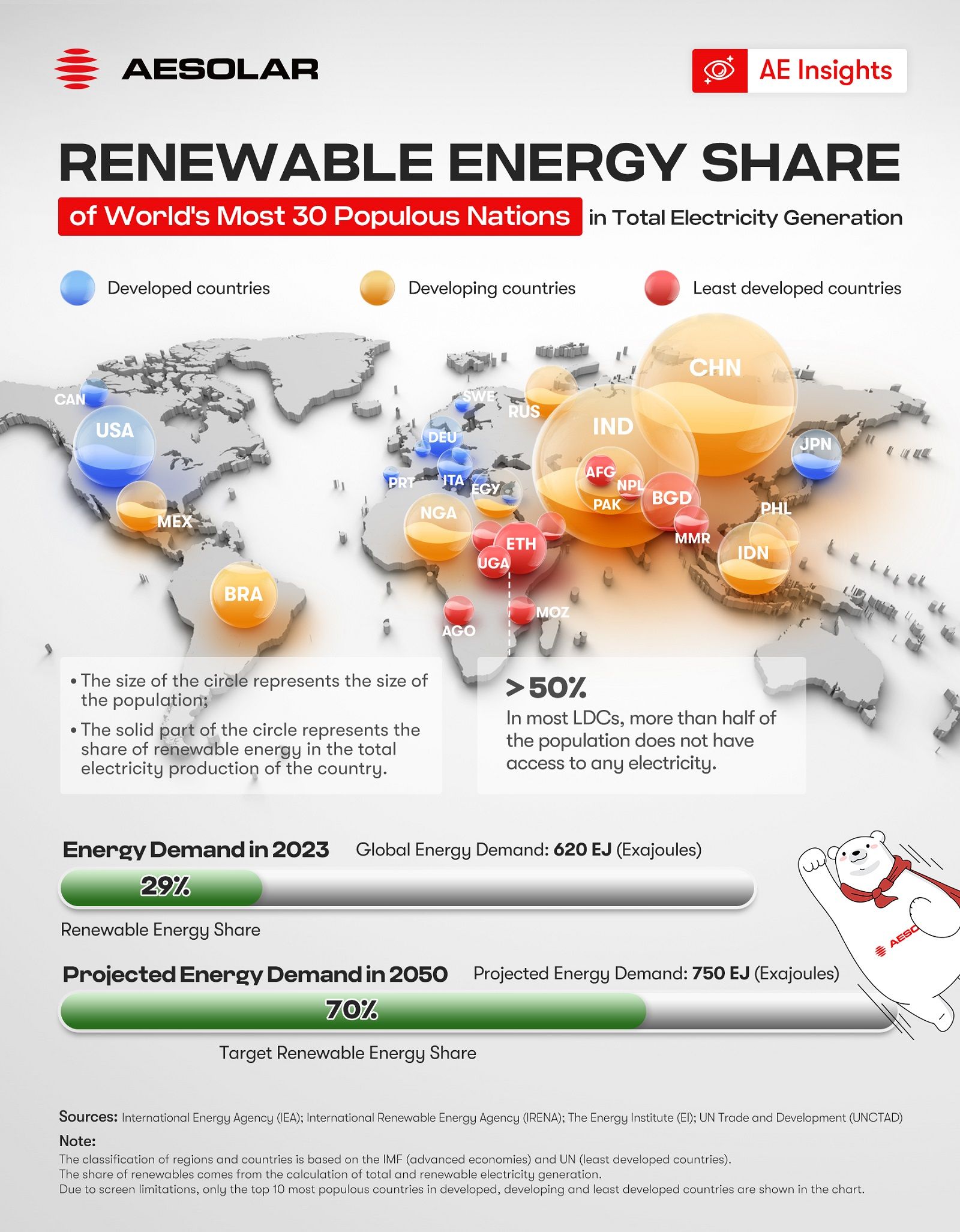The global population has reached a staggering 8 billion, with the most populous nations driving significant energy demand. Among these nations, the distribution of renewable energy remains highly uneven, our latest infographic highlights the disparities in renewable energy share among the world's 30 most populous countries(Top 10 in 3 different development situation), revealing significant gaps and future challenges.

In the least developed countries (LDCs), renewable energy sources play a critical role in electricity generation. Nations like Ethiopia and Uganda boast renewable energy shares of 100% and 99.0% respectively. However, despite these high percentages, a harsh reality persists: more than half of the population in most LDCs lacks access to any form of electricity. This stark disparity underscores the urgent need for infrastructural development and international support to bridge the energy gap in these regions.
Developing countries present a mixed picture. While Brazil, with its abundant hydro resources, has a renewable energy share of 88.9%. Other populous nations like China and India, despite their rapid economic growth however, due to their massive population, challenges remain. China, for instance, accounts for nearly 40% of the world's total installed renewable energy capacity, but renewable energy only accounts for 32% of its electricity consumption. Similarly, India, has a renewable energy share of 19.5%. These figures highlight the need for these countries to accelerate their efforts on renewable energy steps to meet growing energy demands sustainably.
Developed countries have made significant strides in renewable energy adoption. Germany and Sweden exemplify this progress, with renewable energy shares of 53.0% and 69.0%, respectively. These countries demonstrate how robust policies, technological innovation, and substantial investments can lead to a sustainable energy transition.
Looking ahead, the global energy landscape is poised for significant changes. The current global energy demand stands at 620 exajoules (EJ), with renewables contributing 29%. By 2050, this demand is projected to rise to 750 EJ, with an ambitious target of 70% renewable energy share. Achieving this goal will require concerted efforts to enhance renewable energy infrastructure, technological advancements, and international cooperation.
Despite the progress made, the path to achieving the 2050 vision is fraught with challenges. The infographic illustrates the critical need for global collaboration and investment in renewable infrastructure to ensure an equitable energy transition for all nations. The disparities in renewable energy adoption between developed, developing, and least developed countries highlight the importance of targeted policies and financial support to bridge these gaps.
Explore AESOLAR's solar solutions: LINK
